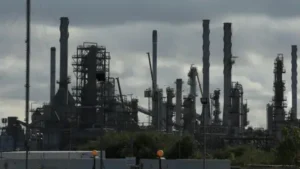**Boeing’s 787 Dreamliner: A Critical Examination of Safety and Whistleblower Concerns**
Recently, Boeing’s 787 Dreamliner, once celebrated as one of the safest aircraft in aviation history, faced unprecedented scrutiny amidst a tragic aviation disaster. The Air India incident, resulting in the loss of at least 270 lives, has brought to light numerous critical questions surrounding the aircraft’s design, production quality, and the whistleblower allegations that have haunted Boeing over the years.
The crash of Flight 171 just 30 seconds after taking off has unfolded further investigations into the safety features and underlying issues of the 787 Dreamliner. Prior to this disaster, the 787’s record was laudable—it had successfully operated for nearly 15 years and transported over a billion passengers without any major crashes recorded. However, this incident raises concerns about the integrity of such a modern craft, particularly considering its complicated production history and numerous red flags from whistleblower claims.
Whistleblowers have forwarded grave concerns regarding the production standards at Boeing’s facilities, asserting that flawed aircraft components might have been overlooked or even improperly installed to expedite deliveries. These allegations have been met with firm denials from Boeing, yet they remain vital in understanding the potential vulnerabilities present in the 787.
In the wake of the Air India tragedy, investigators scoured flight recorder data to dissect the circumstances leading to the accident. The Boeing 787 Dreamliner was envisioned in the early 2000s when rising fuel prices compelled airlines to seek more economical aircraft. This novel development culminated in a historic rollout in 2009, marking it as a pioneering airplane built primarily from composite materials. It was designed to be a low-weight, fuel-efficient powerhouse, boasting advanced technologies and innovative aerodynamics.
Unfortunately, early into its service, the Dreamliner was plagued by battery-related incidents, prompting its grounding in early 2013. The lithium-ion battery failures resulted in renewed scrutiny over safety protocols and quality standards. Despite these early hiccups, Boeing’s aircraft continued to receive accolades for safety as cumulative industry-wide reputations maintained a positive outlook. Nevertheless, deeper issues embedded within the production process emerged in subsequent years, pointing towards serious lapses in quality control connected to the establishment of a new assembly line in South Carolina.
The impact of such a relocation from the traditional Boeing manufacturing hubs has come under fire, with ex-employees like John Barnett, who alleged high-pressure environments fostering unsafe practices, becoming notable figures in the whistleblowing landscape. He detailed at lagging safety standards that allowed defective components to make it to the assembly line, thus risking safety.
Mr. Barnett’s claims have been corroborated partially by investigations conducted by the Federal Aviation Administration (FAA), which identified significant issues regarding parts tracing and management at Boeing’s South Carolina facility. Another whistleblower, Cynthia Kitchens, echoed these claims, uncovering problems with used parts being fitted into planes inappropriately as the production pressure mounted to maintain delivery schedules.
Boeing has categorically refuted these assertions, maintaining its position that the Dreamliner meets all safety requirements as validated by federal oversight. However, the ripple effects of such negative publicity took a harsh toll, highlighting the dichotomy between corporate responsibility and passenger safety.
Despite the looming questions regarding the 787 Dreamliner’s safety, analysts like Richard Aboulafia argue that the historical performance of the aircraft remains commendable. With over a billion passengers flown without any major accidents until now, he firmly believes that problems—while troubling—are of a short-term nature. The crash of the Air India flight, a tragedy in its own right, must also be understood in a broader context with investigations revealing exactly what transpired during the fateful takeoff.
As investigations into the crash proceed, with an emphasis on assessing potential design flaws or production-related oversights, analysts and aviation safety advocates urge the importance of addressing any and all safety concerns. The path ahead requires transparency in investigation results to assure not just regulatory compliance but public confidence. For now, many experts advocate these modern marvels of engineering—and among them, the Boeing 787—retain a commendable safety record, reinforced by years of service and substantial passenger safety oversight.











